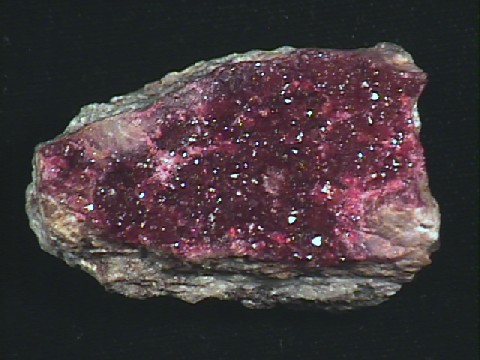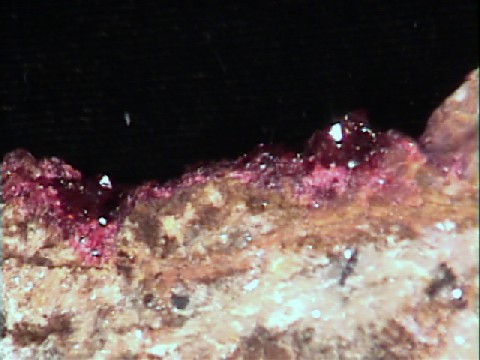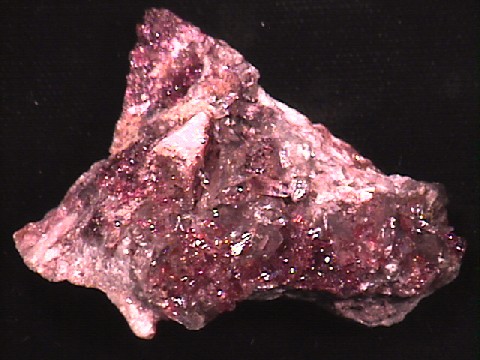 THE
MINERAL ROSELITE
THE
MINERAL ROSELITE
- Chemistry: Ca2(Co, Mg)(AsO4)2 - 2H2O, Hydrated Calcium Cobalt Magnesium Arsenate
- Class: Phosphate Class
- Subclass: Arsenates
- Group: Roselite
- Uses: Only as mineral specimens
Specimens
Roselite is a beautifully colored mineral and varies from rose-red to pink. It would be a misguided assumption that its name came from its color. In fact it is named for a Germany eighteenth century mineralogist, Gustav Rose. The color of roselite comes from the same coloring agent of many different colorful minerals, namely cobalt. Erythrite, of whom roselite is often associated, is also a rose-colored cobalt arsenate and is easily confused with roselite except for the micaceous cleavage of erythrite. Roselite is a popular, although scarce, collection mineral. Its color and small, complex crystals are attractive and make roselite a nice thumbnail mineral.
Roselite is in a solid solution series with the mineral
Roselite is dimorphous with the much rarer, but sometimes associated mineral
Roselite lends its name to a small group of rather obscure minerals called the Roselite Group. The Roselite Group is a group of monoclinic, hydrated calcium arsenates with a general formula of Ca2X(AsO4)2 - 2H2O The X in the formula can be either cobalt, manganese, magnesium and/or zinc.
These are the members of the Roselite Group:
Brandtite (Hydrated Calcium Manganese Magnesium Cobalt Arsenate)- Roselite (Hydrated Calcium Cobalt Magnesium Arsenate)
Wendwilsonite (Hydrated Calcium Magnesium Cobalt Arsenate)Zincroselite (Hydrated Calcium Zinc Arsenate)
PHYSICAL CHARACTERISTICS:
- Color is rose-red to dark pink (lighter shades with decreasing cobalt content).
- Luster is vitreous.
- Transparency: Crystals are transparent to translucent.
- Crystal System is monoclinic; 2/m.
- Crystal Habits include small prismatic to tabular, often complex, crystals and spherical aggregates and massive crusts. Twinning is the norm and just adds to the complexity of the crystals.
- Cleavage is perfect in one direction.
- Fracture is uneven.
- Hardness is 3.5
- Specific Gravity is approximately 3.5 - 3.7 (above average for translucent minerals).
- Streak is light red.
- Associated Minerals are erythrite,
beta-roselite and limonite. - Notable Occurrences include Rappold Mine, Schneeberg, Saxony and Shapbach, Germany and Bou Azzer, Morocco.
- Best Field Indicators are color, crystal habit, streak, cleavage, density and associations with cobalt ores.





